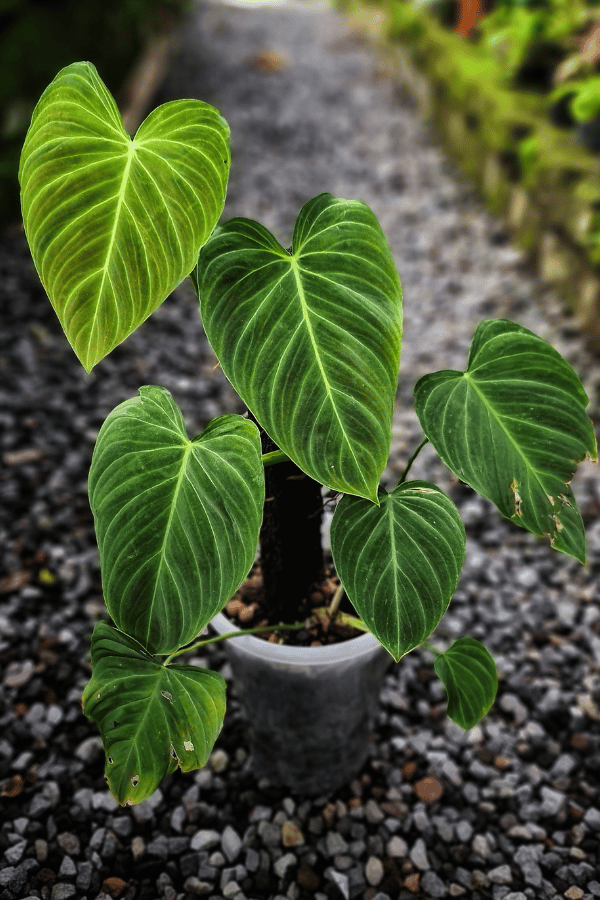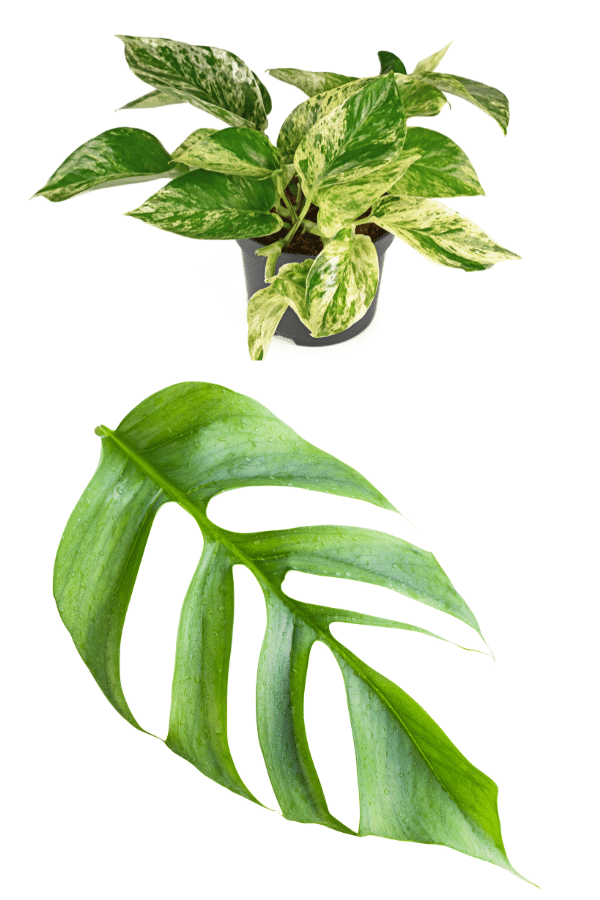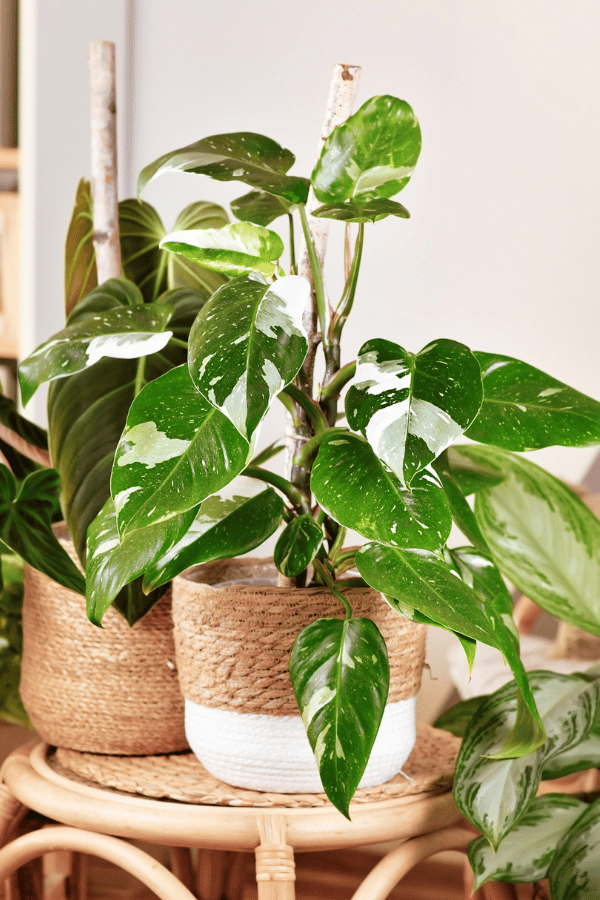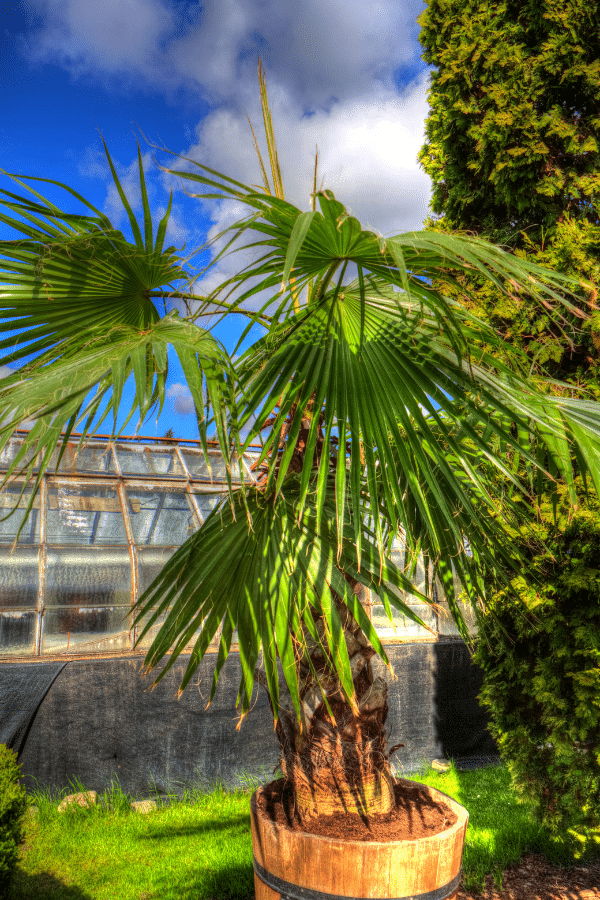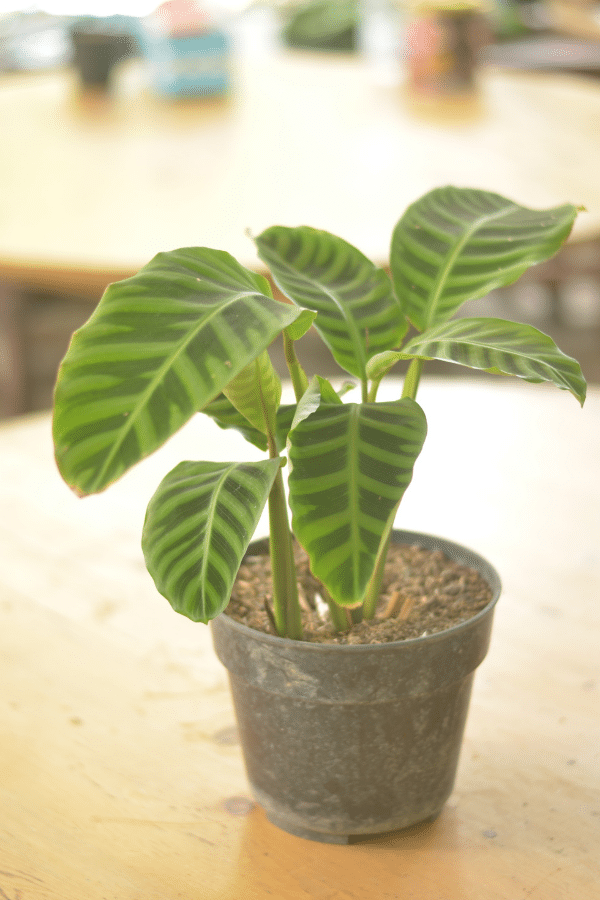Baltic Blue Pothos
Scientific Name: Epipremnum Pinnatum ‘Baltic Blue’
Common Name: Baltic Blue Pothos
Looking for a low-maintenance plant to add to your home? Consider the Baltic Blue Pothos. This unique plant is a variation of the classic Pothos plant, known for its ability to thrive in a variety of environments. The Baltic Blue Pothos has striking blue-green leaves, which add a pop of color to any room.
One of the benefits of the Baltic Blue Pothos is its ease of care. Like other Pothos plants, it can tolerate a range of light conditions, from bright, indirect light to low light. It also can be watered infrequently, making it a great choice for those needing to water their plants regularly.
Overall, the Baltic Blue Pothos’ unique coloring and low-maintenance needs make it a standout among other houseplants.
Quick Care Overview
| Common Name | Baltic Blue Pothos |
| Scientific Name | Epipremnum Pinnatum ‘Baltic Blue’ |
| Family | Araceae |
| Origin | Solomon Islands |
| Identification | Silver, blue-green leaves with fenestrations |
| Height | Up to 10 feet long |
| Soil | Well-draining soil with moisture retention |
| Water | Water when top inch of soil is dry |
| Temperature | 65 – 85F |
| Sunlight | Bright indirect light |
| Toxic to Cats & Dogs | Yes |
| Toxic to Humans | Yes |
| Pests | Mealybugs, scale, whitefly, spider mites, fungus gnats |
| Diseases | Root rot |
Below we will dive deep into how to care for Baltic Blue Pothos.
Baltic Blue Pothos History
Baltic Blue Pothos, also known as Epipremnum Pinnatum Baltic Blue, is a popular houseplant that has been around for many years. This plant is native to the Solomon Islands, where it grows in the wild as a vine. It was first introduced to the United States in the 1960s, and it has since become a popular houseplant due to its attractive foliage and ease of care.
The Baltic Blue Pothos is a cultivar of the Epipremnum Pinnatum plant, which is a member of the Araceae family. The Baltic Blue Pothos is known for its striking blue-green leaves with fenestrations.
Over the years, there have been many different cultivars of the Epipremnum Pinnatum plant, each with its unique characteristics. However, the Baltic Blue Pothos is one of the most popular. And now this plant can be found in many houses, whether it trails in hanging baskets, or climbs up a trellis or moss pole.
Baltic Blue Pothos Identification
Baltic Blue Pothos is often easily confused with Cebu Blue Pothos, but they are infact different plants. The Baltic Blue Pothos is very similar, but it will develop fenestrations in the leaves.
Baltic Blue Pothos Growth Facts
Its leaves are medium sized and elongated and grow up to 5 inches long and 4 inches wide. The plant produces aerial roots that help it climb and attach to surfaces.
How Big Does a Baltic Blue Pothos Get?
Epipremnum Baltic Blue can do great outside in USDA zones 10 to 12, but anything other than that grow them inside. This plant can grow up to 10 feet long under optimal conditions.
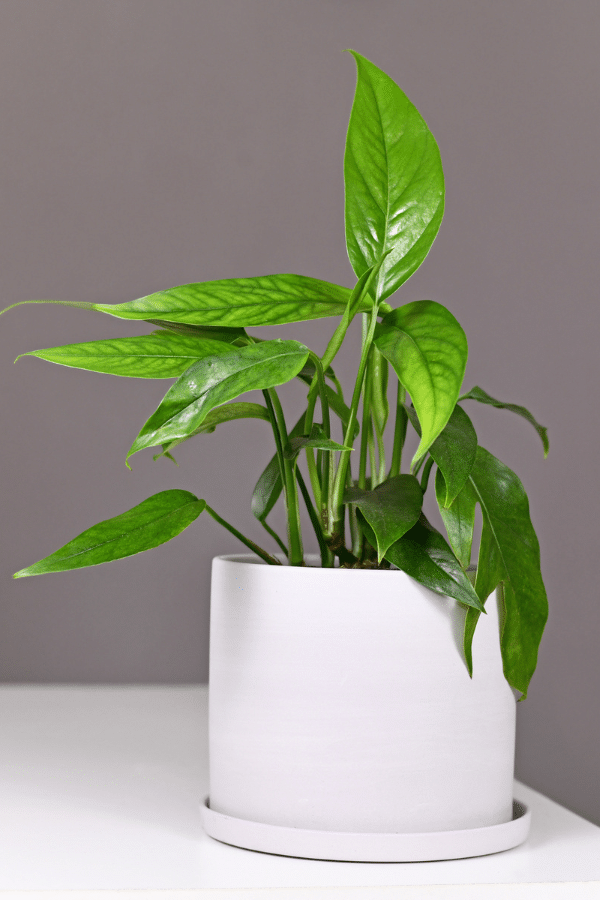
Baltic Blue Pothos Care
Like other Pothos plants, the Baltic Blue Pothos is easy to care for and can tolerate a range of lighting conditions. It prefers bright, indirect light but can also grow in low-light conditions. Water the plant when the top inch of soil feels dry to the touch, and avoid overwatering.
Best Soil for Baltic Blue Pothos
When it comes to growing Baltic Blue Pothos, choosing the right soil is essential for its growth and survival. The ideal soil for Baltic Blue Pothos should be well-draining, moisture-retentive, and nutrient-rich. Here are a few things to keep in mind when selecting the best soil for your Baltic Blue Pothos:
Well-draining soil: Baltic Blue Pothos prefers well-draining soil that does not hold onto water for too long. Like many plants, this plant is susceptible to root rot if the soil is too wet for extended periods. To ensure proper drainage, be sure your pot has drainage holes at the bottom. Ingredients like pumice and perlite are great additions to the soil.
Moisture-retentive soil: While it’s important to have well-draining soil, it’s equally important to have soil that retains moisture. Baltic Blue Pothos likes to be consistently moist, but not waterlogged. A good soil mixture should be able to hold onto moisture while allowing excess water to drain away. Vermiculite would be a great add on to the soil used.
Baltic Blue Pothos Fertilizer
Fertilizer is an essential element when it comes to keeping your Baltic Blue Pothos healthy and thriving. Fertilizer provides the nutrients your plant needs to grow and produce lush, vibrant foliage.
Firstly, it’s important to note that Baltic Blue Pothos requires a balanced fertilizer that contains equal parts of nitrogen, phosphorus, and potassium (NPK). Liquid fertilizer is an excellent option, as it provides a quick and easy way to deliver nutrients to your plant.
When selecting a liquid fertilizer, look for one that is specifically formulated for indoor plants. These fertilizers typically contain the necessary micronutrients that your Baltic Blue Pothos needs, such as iron, magnesium, and calcium.
Fertilize Baltic Blue Pothos plants every two to four weeks during the active growing season (spring and summer) and halt fertilization during the dormant season (fall and winter). However, if your plant is still growing, fertilizer can be given during winter. Be sure to follow the instructions on the fertilizer label.
Baltic Blue Pothos Watering
Proper watering is crucial for the health of your Baltic Blue Pothos. Overwatering can lead to root rot and other issues, while underwatering can cause the leaves to wilt and dry out. Here are some tips on how to water your plant:
Check the soil moisture: Before watering your plant, check the soil moisture. Stick your finger about an inch deep into the soil. If it feels dry, it’s time to water. If it’s still moist, wait a few more days before checking again.
Water thoroughly: When you water your Baltic Blue Pothos, thoroughly water. Water until the excess starts to drain out the bottom of the pot. This ensures that the entire root system gets enough water.
Don’t let the plant sit in water: After watering, make sure to empty the saucer underneath the pot. Don’t let the plant sit in standing water, as this can lead to root rot.
Adjust watering frequency based on season: The watering needs of your Baltic Blue Pothos will vary depending on the season. During the warmer months, the plant will need more frequent watering, while during the cooler months, it will need less.
Baltic Blue Pothos Light Requirements
To thrive, the Baltic Blue Pothos requires bright, indirect light. Put the plant near a window that receives a lot of natural light but not in direct sunlight. Direct sunlight can cause sunburn on the leaves, leading to brown, crispy edges and a dull appearance.
If you’re worried about low light conditions in your home, don’t worry! The Baltic Blue Pothos can tolerate low light conditions, but it won’t grow as quickly or as lushly as it would in brighter light. If you place it in low light conditions, water it less frequently as it won’t be using as much water.
Look at the leaves if you’re unsure if your Baltic Blue Pothos is receiving enough light. If they’re a vibrant green color, your plant receives the right amount of light. If the leaves are a pale green or yellow, then your plant isn’t receiving enough light.
Baltic Blue Pothos Temperature & Humidity
Epipremnum Baltic likes to be in warm temperatures and humid environments, with temperatures between 65°F to 85°F (18°C to 29°C) and humidity between 50% to 70%.
If the temperature drops below 60°F (15°C), your plant may stop growing, and its leaves may turn yellow. On the other hand, if the temperature exceeds 90°F (32°C), the plant may suffer from heat stress, causing its leaves to wilt and dry out.
You may need to use a humidifier to maintain the ideal humidity levels, especially during the winter months when the air is dry. If you don’t have a humidifier, you can place a tray of water near the plant, mist the leaves with water, or group your plants together to increase humidity levels.
Higher humidity levels can also help prevent common problems like spider mites and fungal diseases. However, be careful not to overwater your plant, as it can lead to root rot.
Repotting Baltic Blue Pothos
When repotting your Baltic Blue Pothos, there are a few things to keep in mind. First, choose a pot that is slightly larger than the current one. This will give the roots more room to grow and prevent the plant from becoming root-bound.
Make sure that the new pot has drainage holes to allow excess water to escape. The roots can become waterlogged without proper drainage, leading to root rot.
Before repotting, gently remove the plant from its current pot. If the roots are tightly packed, you may need to loosen them up a bit to encourage new growth.
Next, fill the bottom of the new pot with fresh potting soil. Place the plant in the pot and fill in the gaps with more soil. Be sure to leave enough space at the top of the pot for watering.
After repotting, water the plant thoroughly and place it in a bright, indirect light.
Baltic Blue Pothos Pruning
Maintaining your Baltic Blue Pothos is an important part of ensuring that it remains healthy and vibrant. Regular pruning is crucial to keep your houseplant in good shape and encourage new growth.
When it comes to pruning your Baltic Blue Pothos, you have a few options. You can use scissors or shears to trim back any dead or damaged leaves, or to cut back any overly long vines. You can also pinch back the tips of the vines to encourage branching and fuller growth.
It’s important to be careful when pruning your Baltic Blue Pothos to avoid damaging the plant. Make sure your scissors or shears are sharp and clean to prevent tearing the leaves or vines.
Propagating Baltic Blue Pothos
You can take stem cuttings if you want to propagate your Baltic Blue Pothos. This simple process can be done with just a few tools and is great to start propagating when you need to prune your plant.
To start, you will need to identify a healthy stem on your plant. Look for a stem at least 4-6 inches long with several nodes. Nodes are the points on the stem where leaves and roots grow.
Once you have identified a suitable stem, use a clean pair of scissors or pruning shears to make a clean cut just below a node. Remove any leaves from the bottom third of the stem, leaving only a few at the top.
Next, fill a small container with water and place the stem cutting in it, making sure that the bottom of the stem is submerged. Place the container in a bright, indirect light. Switch out the water with fresh water every few days to keep it fresh.
After a few weeks, you should start to see roots forming on the bottom of the stem. Once the roots have secondary roots, you can transplant the cutting into a pot with soil.
Baltic Blue Pothos Toxicity
Toxicity to Humans
Baltic Blue Pothos is toxic to humans, so do not ingest any part of this plant and wash hands after handling.
Toxicity to Cats & Dogs
If you have a pet and are thinking of getting a Baltic Blue Pothos, you may be wondering if it is safe for your furry friend. The answer is no. Baltic Blue Pothos is toxic to pets, including cats and dogs.
If your pet ingests any part of the plant, they may experience symptoms such as vomiting, nausea, difficulty breathing, and throat irritation. In severe cases, ingestion can lead to crystals formation in the kidneys, which can be fatal. It is important to keep Baltic Blue Pothos out of reach of pets and to seek veterinary care immediately if you suspect your pet has ingested any part of the plant.
Baltic Blue Pothos Problems
Baltic Blue Pothos Leaves Turning Yellow
If you notice that the leaves of your Baltic Blue Pothos are turning yellow, it could be a sign of overwatering. Overwatering is a common issue that can cause your plant’s roots to rot, leading to yellow leaves.
To prevent overwatering, ensure that you only water your Baltic Blue Pothos when the soil is dry to the touch. You can also use a moisture meter to check the soil’s moisture level.
Another reason your Baltic Blue Pothos leaves may be turning yellow is due to lack of sunlight. Pothos plants require bright, indirect light to thrive. If your plant is not getting enough light, its leaves may turn yellow.
To remedy this issue, move your plant to a brighter location or consider using artificial grow lights to supplement natural light.
In addition to overwatering and lack of sunlight, yellow leaves can also indicate nutrient deficiencies or pest infestations. If you have ruled out overwatering and lack of sunlight as the cause of yellow leaves, consider fertilizing your plant or inspecting it for pests.
Baltic Blue Pothos Leaves Turning Brown
There can be a few different problems if you notice brown spots on your Baltic Blue Pothos leaves. One possibility is sunburn, which can occur when the plant is exposed to direct sunlight for too long. In this case, the leaves will have brown spots that are dry and crispy to the touch. Place your plant in a spot that receives bright, indirect light to prevent sunburn.
Another possible cause of brown spots on Baltic Blue Pothos leaves is overwatering. When the roots are waterlogged, they cannot absorb oxygen properly, causing the leaves to turn brown and wilt. To prevent this issue, allow the soil to dry out slightly between waterings and ensure that your pot has proper drainage.
Finally, if you notice brown spots that are slimy or have a foul odor, it may indicate a fungal or bacterial infection. In this case, removing the affected leaves and treating the plant with a fungicide or bactericide is best. Make sure to follow the instructions carefully and avoid overuse, as this can harm the plant.
Baltic Blue Pothos Diseases
Baltic Blue Pothos are susceptible to diseases, such as root rot, leaf spot, and bacterial blight. Treat any affected area with a fungicide to remedy these diseases in the plant.
Baltic Blue Pothos Pests
Spider mites, mealybugs, scale, thrips, whitefly, and fungus gnats are all some of the common pests that can cling to the Baltic Blue Pothos. If you see any of these pests on your plant (always inspect every time you water), treat it with insecticidal soap by following the directions on the label.
OTHER POTHOS RESOURCES:
Searching for a new houseplant?
Take our houseplant quiz to see what your next plant should be based on the room it’s in, the specific lighting the room receives, if you want it on the floor or on the table, and much more!


